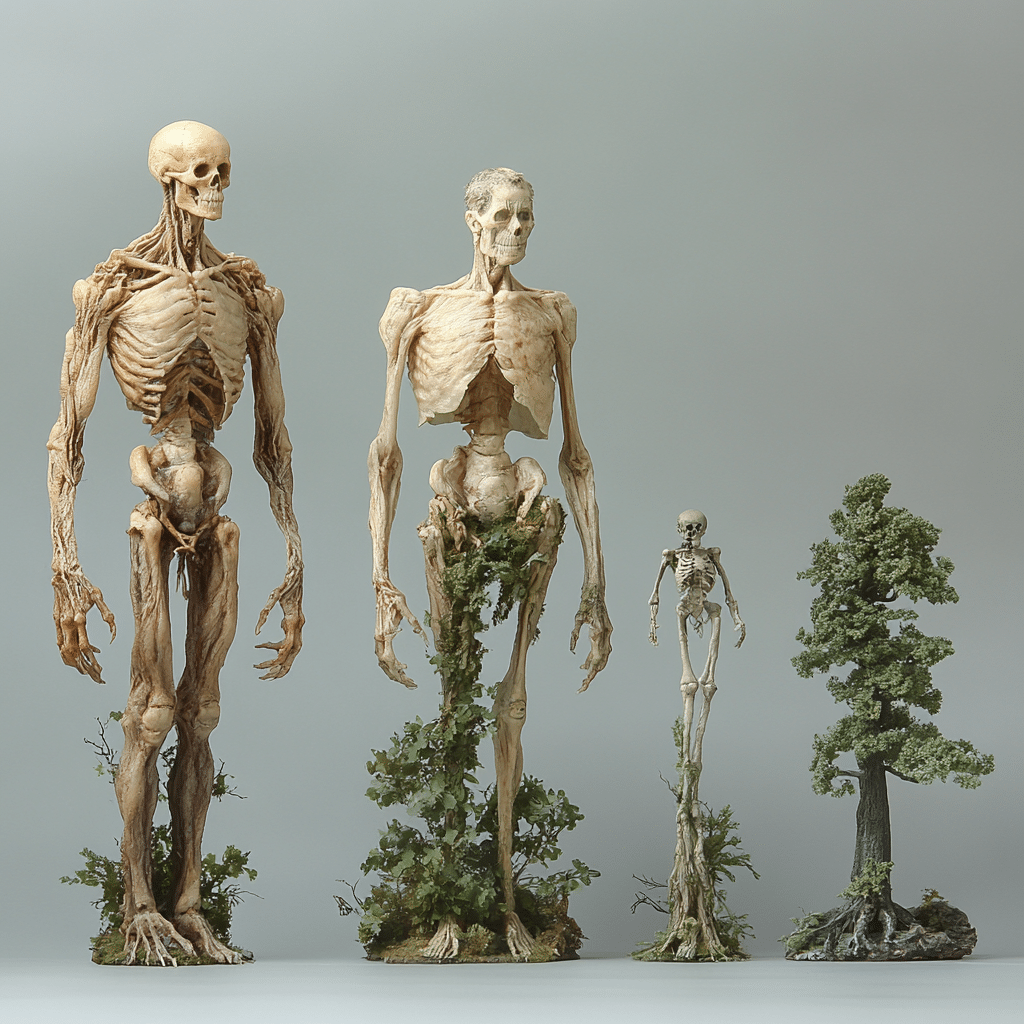Height can go beyond being a mere number; it’s a significant part of our daily interactions and perceptions. It shapes our outlook on authority, attractiveness, and even job prospects. Comparing heights helps us understand these societal norms that may seem trivial but run deep in our culture. Research from the University of California in Berkeley indicates that each inch of height can add about $1,000 to a person’s annual salary. This statistic reveals how height might drive success in careers, suggesting that societal preferences often favor taller individuals.
In our everyday lives, height influences social interactions—think about dating preferences, job interviews, and even friendships. Moreover, whether in a team sport or a casual meet-up, height can affect dynamics in ways we don’t often acknowledge. The implications are vast, and diving into these comparisons can provide us with intriguing insights about ourselves and the world around us.
The Importance of Comparing Heights in Daily Life
The significance of comparing heights touches various facets of life, namely, professional success, relationships, and even personal identity. Taller people frequently carry a perception of confidence and authority, making them seem more suitable for leadership roles. This perceived advantage often translates into higher salaries, more opportunities, and even more robust social circles.
In dating, people tend to gravitate towards partners who fit certain height expectations. In fact, a tall individual might be seen as a better fit, simply based on societal ideals. Understanding height dynamics can empower us to reassess these biases, paving the way for more inclusive views in both personal and professional spaces.
Understanding height’s role is essential in a society increasingly mindful of equity and empathy. As we compare heights, we learn to appreciate the beauty in diversity. It’s not just about inches; it’s about valuing individuals for their unique contributions and perspectives, no matter their stature.

Top 7 Fascinating Examples of Height Comparisons
Delving into real-world examples of comparing heights can yield engaging insights into various realms of life. Here’s a closer look at seven compelling cases where height plays a significant role.
1. Sports Icons: Height’s Impact on Performance
In sports, height is often a game-changer. For basketball, it’s practically a prerequisite! Players like LeBron James (6’9″) and Shaquille O’Neal (7’1″) exemplify how height can translate into athletic success. These towering athletes dominate the courts and highlight how even a mere inch can change the outcome of a crucial game. Their success underscores a narrative that often elevates stature as a vital factor in sport performance.
2. Fashion Industry: The Tall vs. the Short Model Debate
The fashion world has historically considered height as a standard of beauty. Taller models, like Adriana Lima (5’10”), have graced runways, reinforcing a long-standing trend. However, trends are shifting! Brands are increasingly embracing shorter models, like Karlie Kloss (6’1″), challenging that archaic narrative. The push for greater inclusivity signifies a refreshing change, breaking the conventional molds and paving the way for new beauty standards.
3. Celebrity Comparisons: Height in Hollywood
In Hollywood, height often makes headlines. Tom Cruise (5’7″) navigates the industry effectively, despite being shorter than many co-stars. His career exemplifies how creativity, such as using clever camera angles, can compensate for height differences while spotlighting the industry’s expectations around male stature. This phenomenon prompts fascinating discussions on how height perceptions can stretch beyond just the screen.
4. Historical Figures and Their Heights
History is rife with cases where height shaped leaders’ legacies. Abraham Lincoln, towering at 6’4″, naturally commanded respect. In contrast, Napoleon Bonaparte (5’6″), often the subject of ridicule due to his height, showcases how these perceptions can overshadow accomplishments. The cultural narratives surrounding height persist, influencing how society remembers these influential figures.
5. Evolutionary Perspectives on Height
From an evolutionary standpoint, height also reflects survival advantages. Taller individuals may have been favored as protectors, improving chances for successful mate selection. Studies published in “Nature” reveal that height correlates with social status, suggesting taller individuals may enjoy better reproductive success, shedding light on the evolutionary undercurrents in height preferences.
6. Psychological Effects of Height Differences
Many studies link height with self-esteem. Research indicates that taller individuals often report a higher self-image, shaping how they engage socially. On the flip side, shorter individuals may grapple with societal stereotypes that can impact their identity. This dynamic prompts reflection on how perceptions of height color personal narratives and self-worth.
7. Global Height Trends: A Cross-Cultural Perspective
Diving into global height trends offers fascinating insights into cultural diversity. For instance, the Netherland boasts some of the tallest populations, averaging around 6’0″ for men, while Guatemala has much shorter averages. These differences reveal much about nutrition, healthcare access, and genetic factors across various societies, reminding us that height isn’t merely an individual trait but can be a societal reflection.

Navigating Height Differences: Implications and Future Perspectives
As we explore the nuances of comparing heights, we uncover transformative insights that extend beyond mere numbers. Height impacts our interactions, from personal relationships to professional paths. Discussions surrounding height remain relevant, emphasizing its pivotal role in shaping our perceptions.
With the world progressing toward inclusivity, the dialogue around height is poised for change. We may soon witness a landscape where society appreciates all heights equally, thus dismantling stereotypes that have long influenced our views. Embracing diversity in representation enriches our understanding of each individual’s unique contributions. This nuanced discussion can lead to a broader cultural acceptance, fostering an environment where everyone, regardless of height, has the opportunity to thrive, succeed, and inspire.
Height might be a surface-level attribute, but its implications run deep. So next time you think about comparing heights, remember it’s about more than just inches—it’s about the multifaceted human experience.
Comparing Heights: A Fascinating Look at Differences
The Global Average and Its Quirks
When comparing heights, you might be surprised by the disparities around the globe. For instance, the average height of an adult man in the Netherlands is around 6 feet, making them some of the tallest folks on the planet. In contrast, countries like Guatemala have an average male height of about 5 feet 4 inches. This difference can lead to some amusing encounters—imagine a Dutch person struggling to fit into a Guatemalan café! Speaking of contrasts, did you know that some of the tallest and shortest celebrities have shaped our perceptions? For example, the popular actress Anna Fry stands at a modest height, yet she captures the screen effortlessly, showing it’s all about confidence, not just stature.
Fun Facts That Make You Think
While diving deeper into comparing heights, consider the trivia that some ancient cultures believed that height was directly linked to a person’s worth or ability. Height was associated with strength and leadership, which explains why many ancient statues depicted leaders as towering figures. Jump forward to today, and we find ourselves in a world where size may not be as telling as it once was—think about how the short but witty Captain Raymond Holt from Brooklyn Nine-Nine commands respect, proving that great things come in all sizes! This cultural viewpoint shifts our perspective on how we perceive authority and capability.
Height and Health: An Unlikely Connection
Interestingly, research suggests that height can influence health outcomes, with taller individuals often having a lower risk for certain diseases. However, it’s essential to highlight that this isn’t a one-size-fits-all scenario. Genetics play an influential role, and environmental factors also chip in. There’s even debate over whether certain dietary habits, like those seen in the culinary sphere of Kayne Prime, affect height over generations! Now, as we wrap up our mini-height tour, let’s think about how cultural icons, like famed musician Kim Clement, not only brought us music but also challenged perceptions about height in the creative fields, showing talent transcends physical attributes.
So, whether you’re comparing heights for fun or pondering the social implications, remember that every inch tells a story, adding spice to the human experience!






















